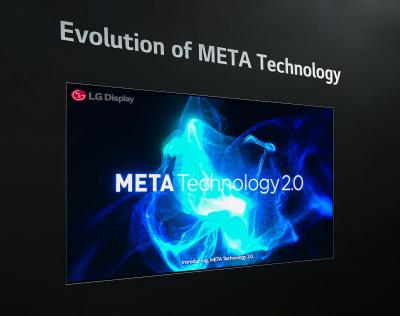OLED displays have been gaining popularity rapidly, and are already the dominant smartphone display technology. OLEDs are also the display technology of choice in the smartwatch market, making inroads into the TV, monitor, laptop and tablet markets. The future of the OLED industry looks bright.
In recent years, the focus of the industry, beyond increasing capacity and reducing production costs, has been improving the performance of OLEDs in the areas of display brightness, efficiency, and lifetime. Brightness is required in many applications - from TVs (for HDR and to view in ambient lighting) through smartphones (outdoor viewing) to automotive, and efficiency is a plus in any scenario (but mostly in mobile displays). Display lifetime is already good enough for many applications, but in some cases (like automotive, and IT displays) it is critical. These three properties usually go together - if you can make more efficient OLED displays, you can drive them at a lower current to achieve the same brightness, and so lifetime increases, or you can achieve higher brightness, etc.
Rapid advances have been shown by new technologies introduced in the last 5 years or so - new OLED stack materials, micro-lens arrays (MLA), tandem stacks, polarizer-free OLEDs and deuterated OLED compounds. All of these innovations have managed to increase the performance of OLEDs.
We identify several key technologies that will help to increase the efficiency and brightness (and lifetime) even further. In fact, by adopting all of these technologies, it is likely that the brightness of OLEDs will be able to increase by a factor of 5X or more, and efficiency will also increase dramatically. Here are some of the key technologies to watch:
- Next-generation OLED emitters (blue PHOLED, TADF/HF, and others), this will be powered by increased use of AI (machine learning) for material discovery
- Plasmonic OLEDs
- Increased adoption of deuterated compounds
- Improved micro-lens arrays with higher light extraction
- Maskless OLED production processes
- Increased adoption of tandem (stacked) OLED devices
- Improved backplane designs, and novel backplane materials
- Innovative display architectures and pixel design
If you want to learn more about these exciting new innovations and follow the latest OLED market and industry trends, check out the OLED Toolbox. These latest technologies are covered in depth in the OLED Insights section of the Toolbox, and covered by some of our expert industry articles as well. This is a great way to quickly become an expert in the OLED industry, identify the next trends, and improve your company's analysis and market understanding.



